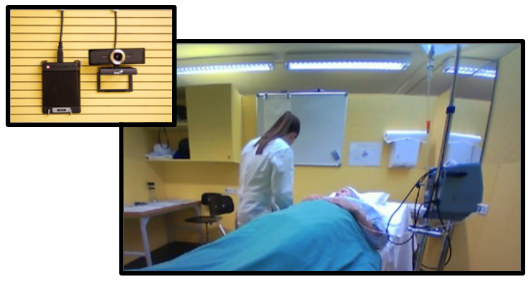Video-based self-reflection and peer coaching
If students are filmed while completing a task, these videos are a promising source for reflective learning. With the solutions from the University of Bern, both video-based self-reflection and video-based peer coaching are possible.
Overview
Use of video-based self-reflection
Which learning processes can be stimulated with these scenarios?
In the scenario of "video-based self-reflection", students reflect on their own actions retrospectively. By taking an external perspective, they perceive their own actions consciously and process them actively, possibly on the basis of some theory.
The learners recognize their typical behavior patterns, habits and become aware of their own strategies for action. Ultimately, students develop new opportunities for action and development prospects (cf. Reusser, 2005; Vohle & Reinmann, 2012).
In the "peer coaching" scenario, students give each other feedback on their individual recordings and discuss them together. Such an approach is equally beneficial to learning for feedback recipients and providers. The feedback recipients benefit directly from their peers' feedback. The feedback providers not only evaluate the feedback recipients' performance but often—at the same time—their own actions as well. On the one hand, they practise giving high-quality feedback—a key competence that often receives little support in study programmes. On the other hand, the analysis and explanation of the feedback given can reduce one's own need for external feedback (cf. Nicol, Thomson, & Breslin, 2013).
What about the recorded students' personal rights?
The rights remain protected. Owing to the individual rights management in ILIAS, students can only access their own videos. To learn how to use this rights management tool, see the "Procedure" tab.
Which use scenarios can be implemented?
- Self-reflection: students analyze their own video.
- Self-reflection including tutoring: after the analysis of your own video, there is a tutorial. The tutor can use the students' annotations to prepare for the tutorial and use the time-anchored annotations to go directly to the decisive points during the session. As a result, the quality of tutorial has improved.
- Peer coaching: students analyze their partners' videos. When possible, they discuss feedback together.
- Peer feedback on self-reflection: in the first round, students analyze their own video. The peers then react to these annotations by using the comment function to record their assessment. Thus, the peers provide new perspectives or suggest alternative courses of action.

Procedure
The path to your own video analysis
Similarly to the theory-guided analysis of videos, you can also use the video annotation mode of Opencast in this scenario. You can reach the annotations tool conveniently via ILIAS. Owing to the individual rights management, students are only allowed to analyse their own videos (or their partners' videos).
How do students gain access to their own videos (or those of their partners)?
First, activate the option "Individual rights assignment" in the ILIAS object "Opencast Series". Now there are two possibilities to assign the videos to their owners. If the students upload their videos themselves, they will automatically be assigned as owners. If you as a lecturer upload videos to ILIAS, you have to assign the owner manually.
There are two ways to give students access to their partners' videos. Firstly, groups can be formed, which gives members access to every other group member's videos. Secondly, students can allow other students to access their own videos. This function of "granting access rights" is equally open to lecturers.
Detailed instructions (in German) can be found here.
How do students analyse the videos?
The analysis is performed in the annotation tool of Opencast. There the students write free text annotations according to the observation assignment. Additionally, the can also use predefined category sets. These categories can be created in advance by lecturers, who provide an observation grid which can reflect underlying theories. It is also possible to write comments on other people's existing annotations. To do this, students must publish their annotations.
Support
The ILUB-team supports you in using the video annotation tool and defining suitable deployment scenarios for your courses and projects.
